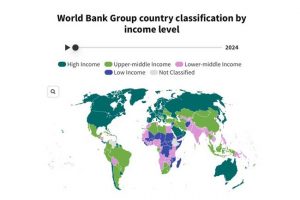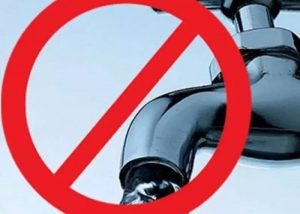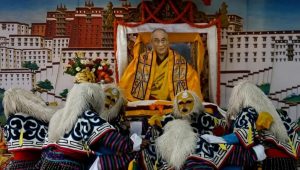Don’t touch Hakkinda
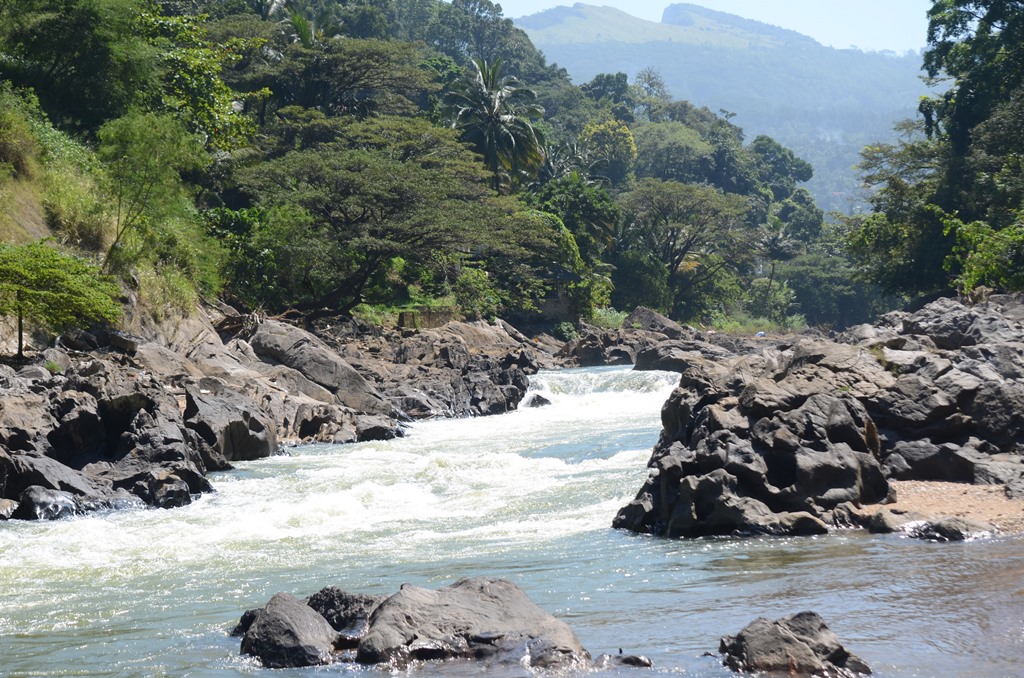
The Mahaweli River is one of the amazing natural wonders in Sri Lanka which has an unusual feature in it. It is the longest in Sri Lanka that starts from the Adam’s peak and ends up in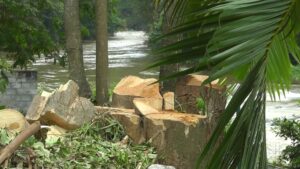 Trincomalee sea after a 335 km long journey.
Trincomalee sea after a 335 km long journey.
At one point of the river, it becomes as narrow as that one can cross it jumping over rocks. This narrowest point in the river is only about 3 meters wide. If you visit there in the dry season, this is a clear scenery. The other special feature lies just about a half a mile away from the narrowest, where you find the widest point of the Mahaweli that the river widens just as 1.2 km distance. These extraordinary two locations which juxtapose in the same area are called Hakkinda Island Complex. This locates in the area called ‘Waratenna’, Gannoruwa that extends in a 59.4 hectare large area – the only environmentally protected zone in the river. The area around Hakkinda is nourished by many of the features that gives it a specialty.
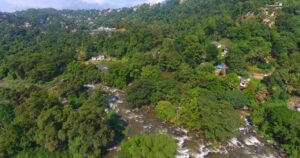 This area is home to the largest number of islands (20) in the Mahaweli River. The largest island covers an area of about 12 acres. Experiments have shown that there are 23 species of mammals, 77 species of birds, 17 species of reptiles and 17 species of snails. The National Aquatic Resources Research and Development Agency (NARA) has conducted research in the Hakkinda archipelago area and found that 18 species of fish live here. Among them, the Green Labeo-Labeo fisheri [Kolagadaya], a species of fish endemic to Sri Lanka can only be found at this place. This fish species was included in the Red Data Book in 2007 due to its highly near extinct status. This fish species, which is thought to have become extinct in the country about 20 years ago, has been re-identified in this area. This was also identified as a breeding ground for the Labeo-Labeo fisheri [Kolagadaya]. Also, the world largest two specimens of this species have been found in this area.
This area is home to the largest number of islands (20) in the Mahaweli River. The largest island covers an area of about 12 acres. Experiments have shown that there are 23 species of mammals, 77 species of birds, 17 species of reptiles and 17 species of snails. The National Aquatic Resources Research and Development Agency (NARA) has conducted research in the Hakkinda archipelago area and found that 18 species of fish live here. Among them, the Green Labeo-Labeo fisheri [Kolagadaya], a species of fish endemic to Sri Lanka can only be found at this place. This fish species was included in the Red Data Book in 2007 due to its highly near extinct status. This fish species, which is thought to have become extinct in the country about 20 years ago, has been re-identified in this area. This was also identified as a breeding ground for the Labeo-Labeo fisheri [Kolagadaya]. Also, the world largest two specimens of this species have been found in this area.
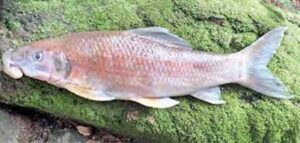
According to NARA, the area is home to endemic fish such as Lella and Gangara, as well as Sri Lankan endemic fishes such as Mountain Abirava, Galpadiya, Dankola Pethiya and Thalakosa. Sixteen species of dragonflies live here, eight of which are endemic to Sri Lanka. This is the habitat of the green leopard and the sand leopard, which are endemic and endangered species in Sri Lanka. Endemic bird species such as the Gray Eagle, the Mile Goya, the Golden Forehead Kottoruwa and the Gira Maliththa can also be seen in the vicinity of these islands. Native reptiles such as the Pinum lizard, Gatahombu lizard, Sri Lankan ringed lizard, and flea beetle, as well as amphibian species such as the Kaha iri Danda, live here.
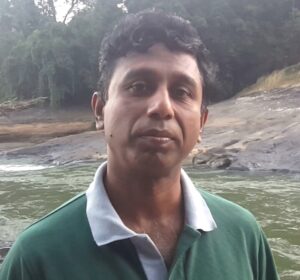 Wildlife Researcher Pradeep Samarawickrema,one of the pioneers in naming this wetland as an Ecological Protection Zone, described the unique features of the area.
Wildlife Researcher Pradeep Samarawickrema,one of the pioneers in naming this wetland as an Ecological Protection Zone, described the unique features of the area.
“This land is biologically as well as historically unique. This area was also the base for the historical ‘Battle of Gannoruwa’ (Sinhalses-Portuguese war) on March 28, 1638. Here, King Rajasinghe II and his army, as a trick, retreating back crossed the Mahaweli River from this place. The Sinhalese army then attacked the Portuguese letting them cross the river allowing their gun powder to get wet. This has been recorded as the greatest guerrilla war in the history of Sri Lanka defeating the Portuguese army.
The temple in which the Tibetan monk Ven. S. Mahinda Thero lived is also nearby this area. There can be seen a sluice gate with two tunnels that was opened by The first Government Agent in
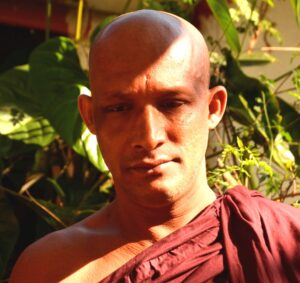
Kandy, George Turner, a British national, on November 9, 1831, and a memorial plaque erected for this purpose can still be seen in this area. These tunnels, large enough for a person to walk on, are thought to have been used in the past to divert water from the Mahaweli River. Although the site has been identified as an archaeological site and declared a site for conservation, no proper action has been taken to date.
“Varathenna Sri Wimalabuddhi Buddhist Center President” Gangawata Korale Deputy Chief Sanghanayake Ven. Waldeniye Samitha expressed frustration at the authorities’ neglect of their responsibility for the ongoing devastation.
“We did our best to protect this environment,” he said. As a result, when this area was gazetted as a protected area, we thought it would be protected. But it didn’t. Today, this gazette notification is limited to the name only. The wastage of the unauthorized constructions constructed in this protected area are dumped directly into the river. Even though some officials take actions, the constructors will bribe money, to continue this process.
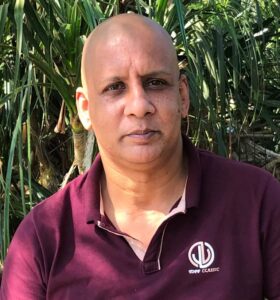 Amit Senanayake, co-convener of the Organization for the Protection of the Central Highlands, also revealed another hidden aspect of the issue.
Amit Senanayake, co-convener of the Organization for the Protection of the Central Highlands, also revealed another hidden aspect of the issue.
Most of the unauthorized constructions are done by Official, if not Important people that have a good reputation in society. Among them are doctors, engineers, and university lecturers. Former officials of the Mahaweli Authority also have lands here. The biggest regret is that people who know the value of the Hakkinda archipelago area are mostly involved in doing this.
It has been more than four years since this area was declared environmentally protected. During this period, a number of constructions and deforestation in the reserve were reported. The Central Environmental Authority has not filed a single case against any of them. If asked, it only means that the legal step is being taken. The Central Environmental Authority, the Mahaweli Authority, the Kandy Municipal Council, the Harispattuwa Pradeshiya Sabha and the Yatinuwara Pradeshiya Sabha are responsible for ensuring the security of this area.
Professor Lalitha Dissanayake of the Department of Geology, University of Peradeniya, who has been conducting research on rivers in Sri Lanka for nearly two decades, described the current fate of the river reserves as follows:
of the river reserves as follows:
According to the topography of a river, three main parts can be identified as erosion, transport, and deposition. Hakkinda Islands are located in a transport zone. River islands are common during the deposit period. However, the Hakkinda Islands in the Mahaweli River are located during a transit period. It’s a unique topographic feature.
Water reserves are reserved under Land Ordinance No. 19 of 1935. According to the Act, a protected area should be maintained at a distance of 198 feet from the riverbank of a major river. With urbanization, these limits are somewhat disobeyed.
Central Province Director of The Central Environmental Authority K.Walikanna mentioned,
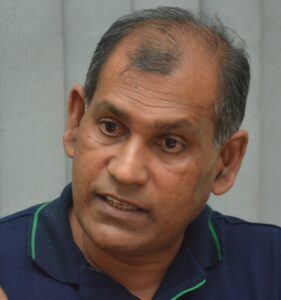
“This is a very sensitive area. This area is being gazette as an Environmental Protection Zone after considering a number of relevant researches. However, just gazing as a protected area does not protect that area. The residents of the area have the greatest responsibility for the implementation of the legal provisions set out in the Gazette. We regularly monitor illegal constructions by settlers in the area. The law is strictly enforced against them. An aristocrat had dug a river and cemented it to make way for the islands. He was told to remove it immediately. According to him, it was removed. The city council had built a flight of stairs leading to the bathing site. It was built under the provisions of the Municipal Council. The city council has been instructed to demolish it. A hotel is being built next to the river in the protected area. We have sent legal notices to him stating that legal action will be taken in this regard. The power to issue a law is vested in the Director General of the Central Environmental Authority. As the Provincial Director, I have been empowered to issue a legal statement expeditiously, as it will take time. Accordingly, I have taken the necessary steps.
Wasantha Yapa Bandara, Attorney-at-Law, Chairman of the Kandy District Coordinating Committee, informed the Parliament on October 21 about the damage caused by illegal constructions in the Hakkinda Protected Zone. That attention should be paid.
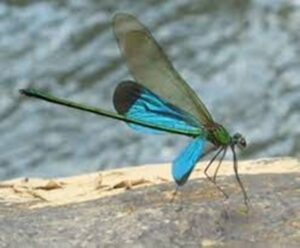
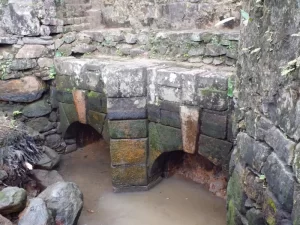 It is clear from the statement of the Provincial Director of the Central Environmental Authority that even after the catastrophe, the law against the perpetrators remains at a very low level. The primary concern of such a sensitive ecological zone is to prevent catastrophe. It is clear that there is no adequate program for this and there is no proper cooperation between the authorities, the community and the community organizations. Enforcement of Environmental Protection Ordinances is the responsibility of the public-funded institutions that are empowered to do so. It is the responsibility of citizens to support this and to raise awareness about it if it is not done properly. These factors must be properly balanced in order to safeguard the well-being of an ecosystem as well as a social system.
It is clear from the statement of the Provincial Director of the Central Environmental Authority that even after the catastrophe, the law against the perpetrators remains at a very low level. The primary concern of such a sensitive ecological zone is to prevent catastrophe. It is clear that there is no adequate program for this and there is no proper cooperation between the authorities, the community and the community organizations. Enforcement of Environmental Protection Ordinances is the responsibility of the public-funded institutions that are empowered to do so. It is the responsibility of citizens to support this and to raise awareness about it if it is not done properly. These factors must be properly balanced in order to safeguard the well-being of an ecosystem as well as a social system.



